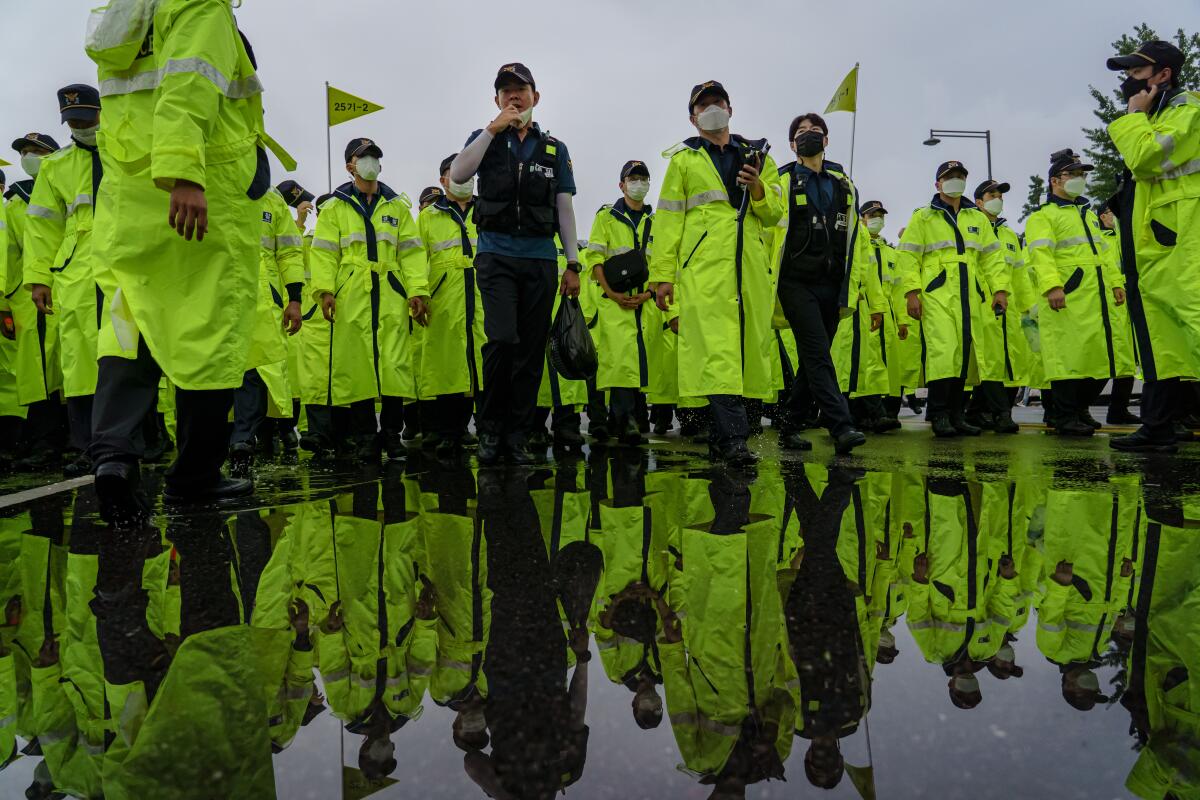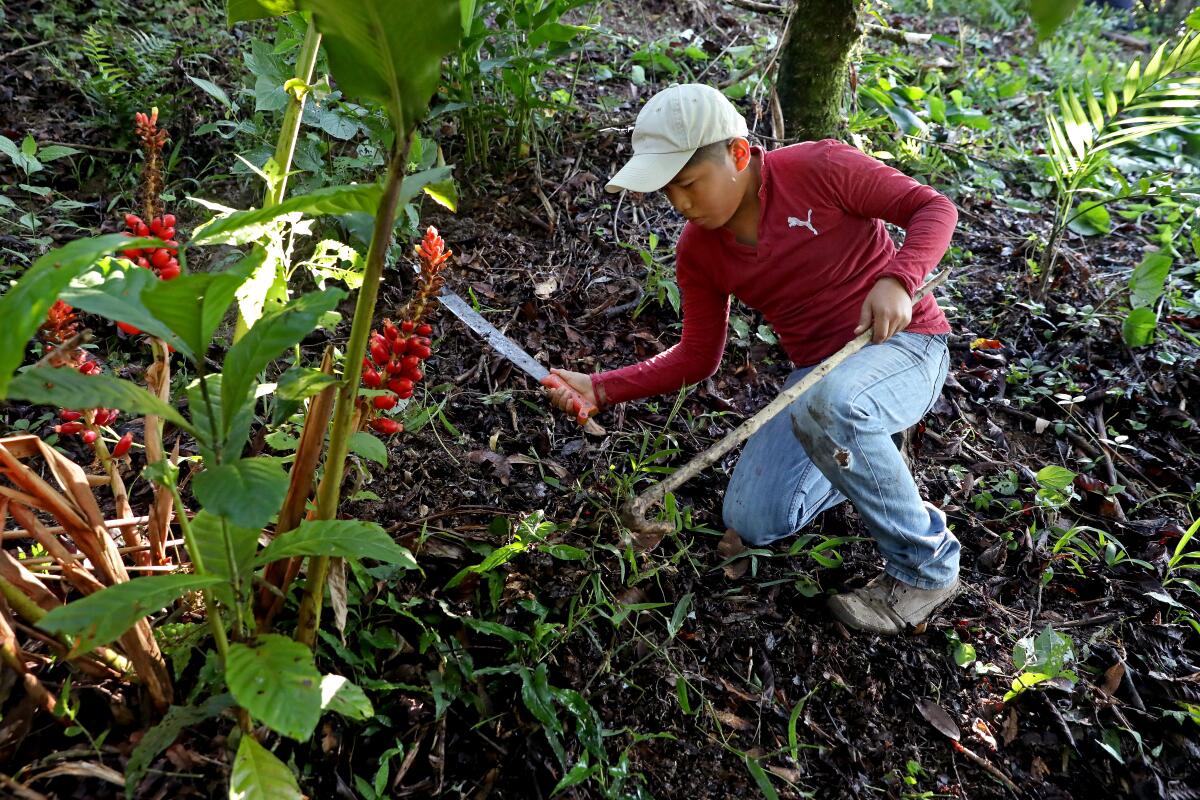Coronavirus Today: A new road map to reopening
- Share via
Good evening. I’m Soumya Karlamangla, and it’s Friday, Aug. 28. Here’s the latest on what’s happening with the coronavirus, plus ways to spend your weekend and a look at some of the week’s best stories.
Over the last few months, the pandemic has started to feel like a long car ride, replete with impatient passengers and unexpected delays. The journey is all the more tiring because it’s still unclear exactly where we’re headed and when we’ll finally arrive. Even for the most patient among us, it’s hard to resist asking: Are we there yet?
This frustration has been particularly acute in California, where fast action against the disease put the state ahead for a time, but then a botched reopening in early summer erased that progress.
Now, in late August, there’s still no reliable treatment, and a vaccine remains months away. But Gov. Gavin Newsom on Friday mapped out the next steps of the journey, with a new plan to reopen more parts of the economy — more cautiously than he did last time.
Consider how things could play out in Los Angeles County, for example. The county currently falls into the most restrictive reopening tier defined by Newsom, meaning that indoor operations are prohibited for many businesses, including restaurants, bars, nail salons and gyms.
To allow more businesses to unlock their doors, the county would have to see fewer than 8% of all coronavirus tests administered coming back positive, as well as fewer than 7 new cases per 100,000 residents each day — for two weeks straight. (Currently, the county’s positivity rate meets the threshold at 5%, but it has logged about 13 new cases per 100,000 residents each day.) Once L.A. County satisfies these benchmarks, indoor operations would be allowed for museums, nail salons, churches, movie theaters, gyms, restaurants and other establishments.
If all goes well for another three weeks and the rates drop even lower, the county could reopen the next set of shut-down businesses — wineries, bowling alleys and offices as well as bars that seat patrons outdoors. You can see more details about which businesses will open with each step here, and find more data about how your county is doing here.
Even with the best intentions, reopenings are a challenge. Some experts fear that college students and essential workers will be the victims of the next big wave of coronavirus cases in California as schools and businesses reopen this fall. At USC, outbreaks among students have been linked not to crowded lecture halls or large parties but to small, indoor gatherings for study groups or game nights.
By the numbers
California cases and deaths as of 4:18 p.m. PDT Friday:
Track the latest numbers and how they break down in California with our graphics.
What to read this weekend
An unexpected victim of the pandemic. For 10 years, downtown Los Angeles was a boom town, as overlooked neighborhoods were renovated and office vacancy rates fell. But then the pandemic hit and, in what seemed like an instant, the gains of the last decade were suddenly at risk.
They’re in jail — for violating COVID-19 rules. South Korea is relying on the letter of the law to fight the pandemic. In addition to the digital surveillance, meticulous contact tracing and medical prowess that have made its coronavirus response the envy of the world, the nation is threatening to prosecute quarantine dodgers, mask refusers, those who aren’t truthful with investigators and anyone else who resists government attempts to keep the outbreak under control.

What will the future of TV look like? With all of us spending more time at home, television has become the medium of the moment. Times writers predict how the pandemic will affect the fall TV season and how these influences could permanently reshape television.
Bryan Metzhua was supposed to be starting seventh grade in southern Mexico. Instead, with no TV to stand in for a classroom, he spends his mornings whacking weeds in his family’s banana, orange and coffee groves. The pandemic has hit poor communities around the world especially hard, making children a crucial source of labor for their struggling families. That’s raised the specter that even when schools reopen, many may never return.

Your support helps us deliver the news that matters most.
What to do this weekend
Get outside — even if you’re not into roughing it. If you want to sleep in a tent but also in a bed, we’ve rounded up some fancy camping — aka “glamping” — destinations. If you want to stay local but beat the heat, our Escapes newsletter has suggestions. And if you’re headed for the trail or the beach, be sure to check the latest on what’s open and what’s closed. You can subscribe to our newsletter The Wild for more on the outdoors.
Watch something great. Our weekend culture watch list includes dramas about Emmett Till and Ruben Salazar as well as some symphonic favorites. And in his Indie Focus newsletter’s roundup of new movies, Mark Olsen digs into a joyful, modernist spin on a classic novel.
Who says you can’t try new restaurants in a pandemic? Times critic Bill Addison has found 12 brand-new L.A.-area restaurants with stellar takeout, from goat curry roti to pork belly tacos to Armenian Lebanese dumplings. Get his and fellow critic Patricia Escárcega’s Tasting Notes newsletter for more.
Go online. Here’s The Times’ guide to the internet for when you’re looking for information on self-care, feel like learning something new or interesting, or want to expand your entertainment horizons.
Resources
— For general safety, wash your hands for at least 20 seconds (here’s a super-fun how-to video). Stop touching your face, and keep your phone clean. Practice social distancing, maintaining a six-foot radius of personal space in public. And wear a mask if you leave home. Here’s how to do it right.
— Watch for symptoms including fever, cough, shortness of breath, chills, repeated shaking with chills, muscle pain, headache, sore throat and loss of taste or smell. If you’re worried you might be infected, call your doctor or urgent care clinic before going there.
— Need a COVID-19 test? Here’s how to receive a free test if you’re in L.A. County. And here’s a map of testing sites across California.
— Here’s how to care for someone with COVID-19, from monitoring their symptoms to preventing the virus’ spread.
— If your job has been affected by the pandemic, here’s how to file for unemployment.
— Here are some free resources for restaurant workers and entertainment industry professionals having trouble making ends meet.
— Advice for helping kids navigate pandemic life includes being honest about uncertainties, acknowledging their feelings and sticking to a routine. Here’s guidance from the CDC.
— In need of mental health services? Here are resources for coping during the crisis from the CDC and the L.A. County Department of Mental Health. L.A. County residents can also call (800) 854-7771 or text “LA” to 741741. The pandemic in pictures

In a typical year, an otherwise healthy preschooler will bring home 12 to 18 upper respiratory infections. But 2020 is not a typical year.
A growing body of evidence suggests preschoolers are uniquely resilient to the novel coronavirus. And in California, where child-care centers have remained open throughout the pandemic, strict rules bar parents from the classroom, rugs and soft toys are frowned upon, and children 2 and older are expected to wear masks at all times.
And, as evidenced in the picture above, the kids seem to have no trouble keeping their masks on or staying six feet apart. To them, masks are like seat belts — just a normal part of daily life.
At one preschool in Beverly Hills, toddlers rush to deposit their toys into the “dirty box” the moment they’ve finished playing with them.
“They go in the oven,” 3-year-old Henry explained as he tossed plastic vegetables into a pot at the preschool’s play kitchen. “And then they go in the washing machine.”

Our reporters covering the coronavirus outbreak want to hear from you. Email us your questions, and we’ll do our best to answer them. You can find more answers in our Frequently Asked Questions roundup and in our reopening tracker.
For the most up-to-date coronavirus coverage from The Times over the weekend, visit our homepage and our Health section, sign up for our breaking news alerts, and follow us on Twitter and on Instagram.




